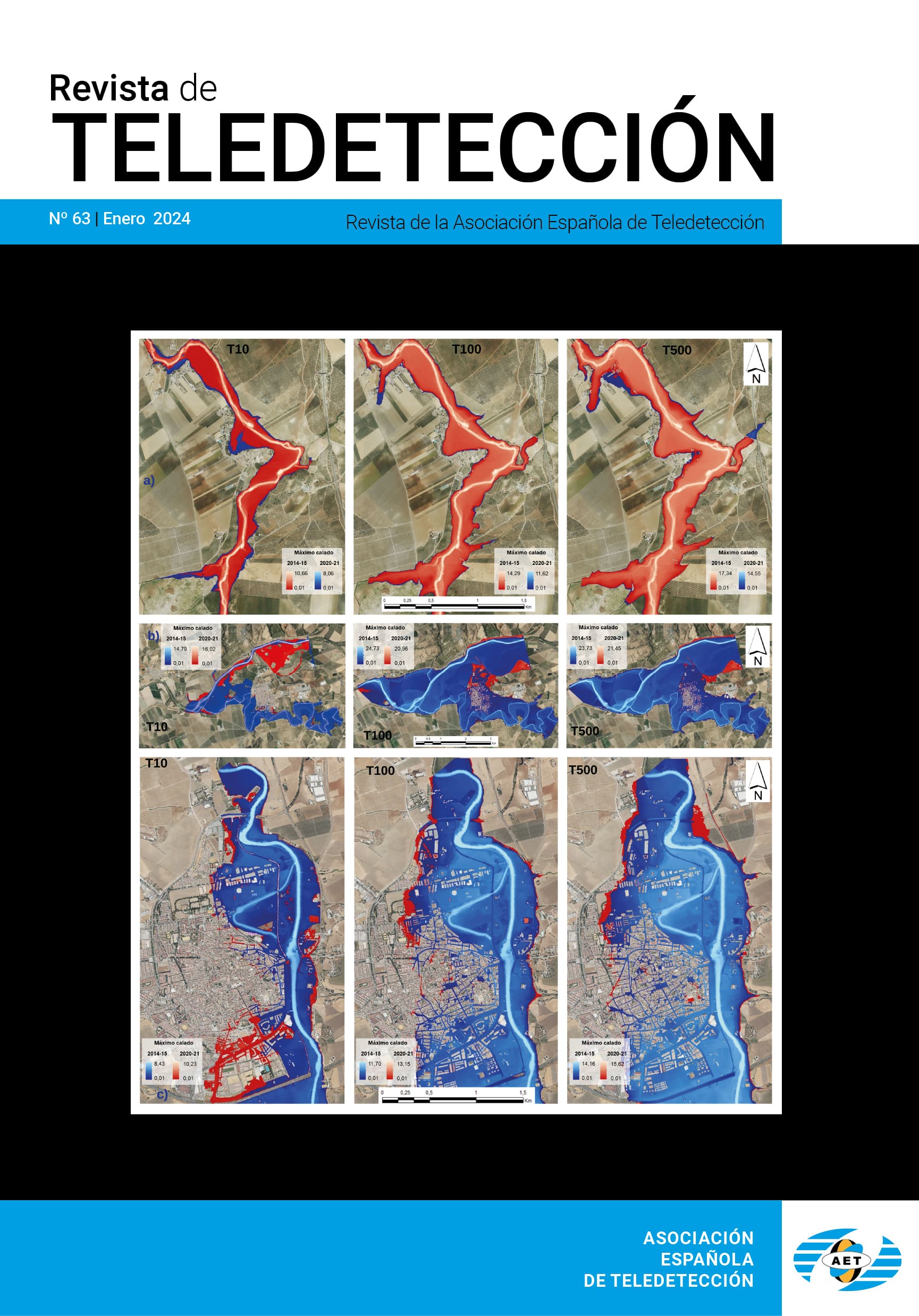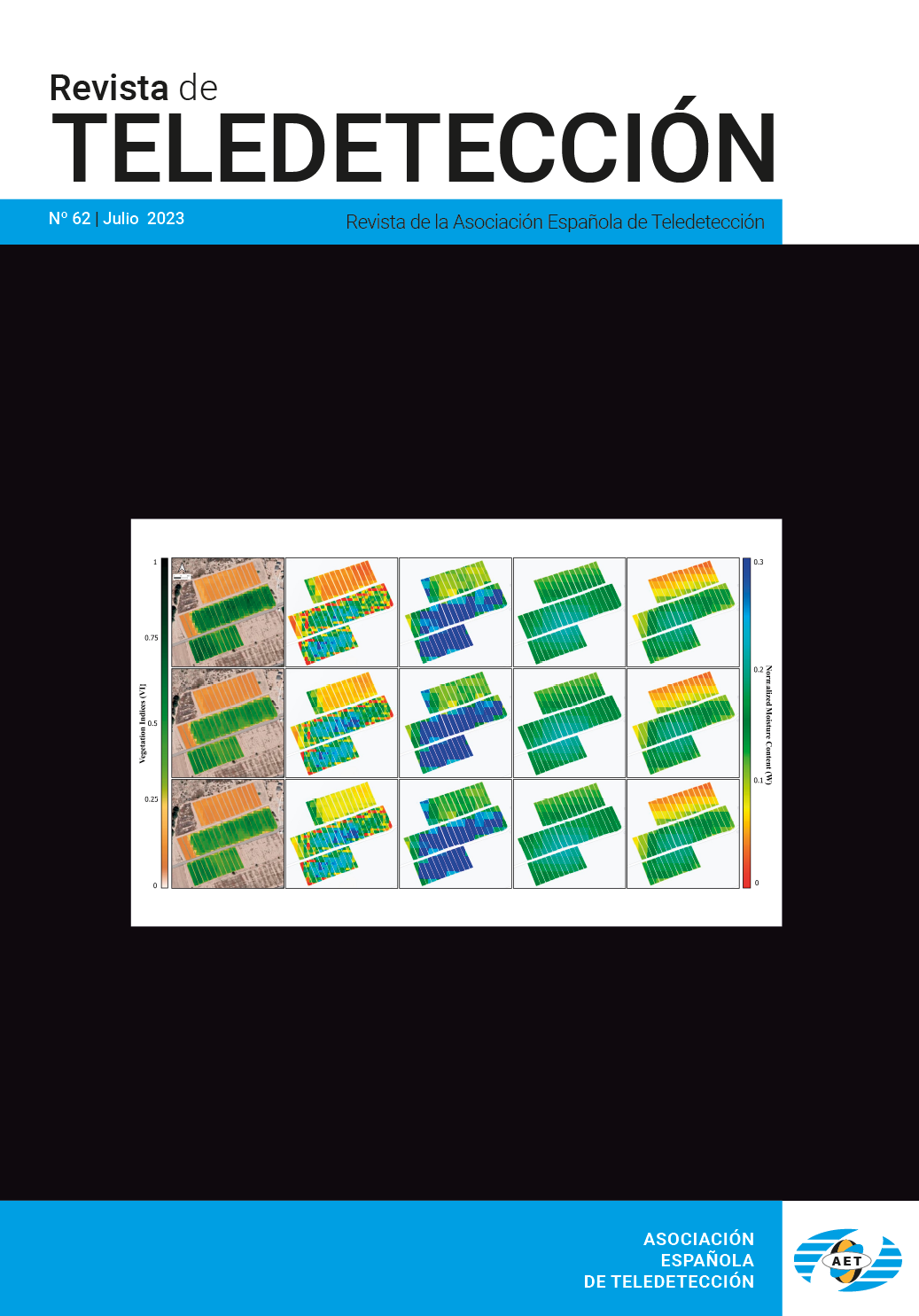Estimación de la fracción de cubierta vegetal a escala continental utilizando sensores de nueva generación
F.J. García-Haro, F. Camacho-de Coca y J. Meliá .
RESUMEN
El análisis de composición espectral (SMA) usualmente determina la distribución de componentes en la escena a partir de un número finito de patrones ( endmembers ) que recogen la variabilidad espectral de la escena. En este trabajo se introduce una metodología para estimar la fracción de cubierta vegetal (FVC) a una escala continental, a partir de datos de nueva generación (VGT, SEVIRI). La metodología apropuesta se ha adesarrollado en el contexto del proyecto LSA SAF, orientado en la estimación de parámetros de la cubierta a partir de datos SEVIRI/MSG, y actualmente se encuentra en una fase preoperacional. La estrategia combina las ventajas de un modelo geométrico (SMA) con un modelo probabilístico que tiene en cuenta la variabilidad natural de las componentes, y permite cuantificar el error en las estimaciones e incorporar información “a priori”. Un paso previo es la extracción de atributos para hacer las estimaciones menos sensibles a factores externos (iluminación, color del suelo) y las sombras. Los resultados iniciales indican que la FVC estimada responde bien a cambios en la actividad de la vegetación y muestra un alto grado de consistencia con otros productos de nueva generación. PALABRAS CLAVE: fracción de cubierta vegetal, Spectral Mixture Analysis, MSG.
ABSTRACT
The scientific user communities have expressed the necessity of accurate maps of vegetation biophysical parameters at different scales, and suitable for long-term monitoring. IN the framework of the EUMETSAT LSA SAF our group is the responsible for the development and implementation of algorithms to obtain fractional vegetation cover (FVC) and leaf area index (LAI) products from the new EUMETSAT meteorological satellites SEVIRI/MSG and AVHRR-3/EPS. This paper outlines a new Spectral Mixture Analysis (SMA) technique based on the Bayesian Theorem, along with the use of standarised SMA, to improve understanding of the impact of endmember variability on the derivation of subpixel vegetation fractions at a global scale. The uncertainty of FVC concerning view and sun angles is minimized by using as input an optimal configuration. Endmember signatures are to longer treated as constants, but they are represented by multi-modal probability density functions. The algorithm incorporates endmember spectral variability in the unmixing process, thus reducing misidentifications of surface components and demanding fewer endmembers. The FVC estimates obtained with the algorithm are spatially and temporally consistent and the results of preliminary validation studies are encouraging. KEY WORDS: fractional vegetation cover, Spectral Mixture Analysis, MSG.
PULSE AQUI PARA DESCARGAR EL ARTÍCULO COMPLETO.




















